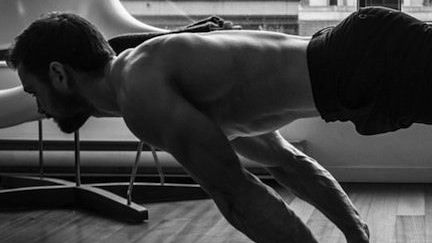

Words: Gentleman's Journal
Last week in chapter one of our fat loss series, we touched upon what nutritional factors need to be considered when trying to improve body composition. In this week’s edition we will talk over how training can help to ensure maximal amounts of lean muscle retention whilst burning fat leading to a lean and muscular physiques.
1. RESISTANCE TRAINING
Engaging in some form of resistance training is our number one priority when it comes to building a lean and muscular physique. Being in a caloric deficit for prolonged periods can be a stressful period for a body due to the reduced amount of energy being ingested. This can eventually persuade our bodies to break down our hard earned lean muscle into amino acids in order to be used for energy. But do not fear, resistance training can help offset this breakdown and encourage our bodies to retain as much muscle as possible via the increase of a process known as protein synthesis.
Lifting weights will also help keep our metabolism ticking over nicely and mean that we can lose fat whilst eating a little more food – always a winner! Basic compound movements such as deadlifts, squats, lunges, chin-ups, presses and rows will help to engage as many major muscle groups. Look to complete 3-5 sets of 5-10 repetitions for these movements.
2. CARDIOVASCULAR TRAINING
HIIT has gained a lot of notoriety in recent years. A plethora of studies have been published demonstrating the superior effects HIIT has on various indicators of health, composition and performance when compared to Low Intensity Steady State (LISS), or in layman’s terms, activities such as jogging.
The premise is to work at close to/at maximal levels of exertion interspersed by periods of rest. The stand out advantage normally referred to by proponents of HIIT is the EPOC effect, commonly known as the ‘afterburn’ effect, which is where one experiences increased metabolism post-exercise. This effect is more pronounced following HIIT and lasts for up to 48 hours post exercise. Importantly, HIIT increases the body’s ability to burn fat. A simple yet effective protocol to implement would be to go for a work to rest ratio of 1:3 and repeat 5-10 times depending on your level of fitness, i.e. 20s hill sprint interspersed by 60s rest for desired sets.
3. THE LITTLE EXTRAS – Non-Exercise-Activity-Thermogenesis
Amidst all the latest and most exotic training and nutrition protocols, one of the simplest and often most overlooked tools is to increase Non-Exercise-Activity-Thermogenesis (NEAT). This is the amount of calories burned from miscellaneous activities such as walking, fidgeting, standing, basically anything other than exercise. NEAT contributes an extra energy demand of 200-900 Kcal per day. Simple strategies to increase NEAT include taking the stairs, using a basket instead of a small trolley at the supermarket, or even just going for a walk whilst listening to some music or your favourite podcast. These could be the little touches needed to help burn a few extra calories without requiring a great deal of exertion or effort.
By Will McLintock & Tiago Ribeiro from Matt Roberts Hampstead


